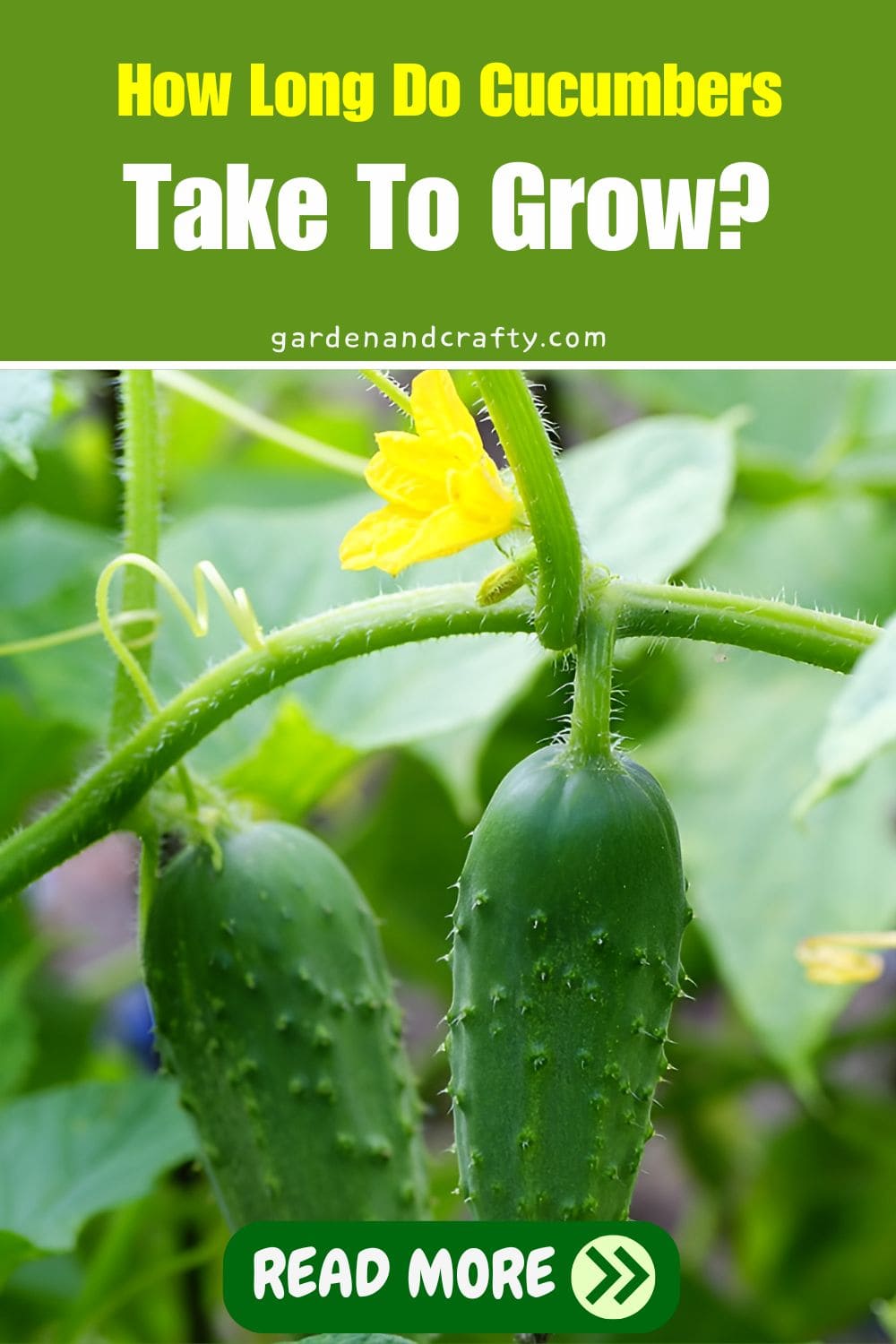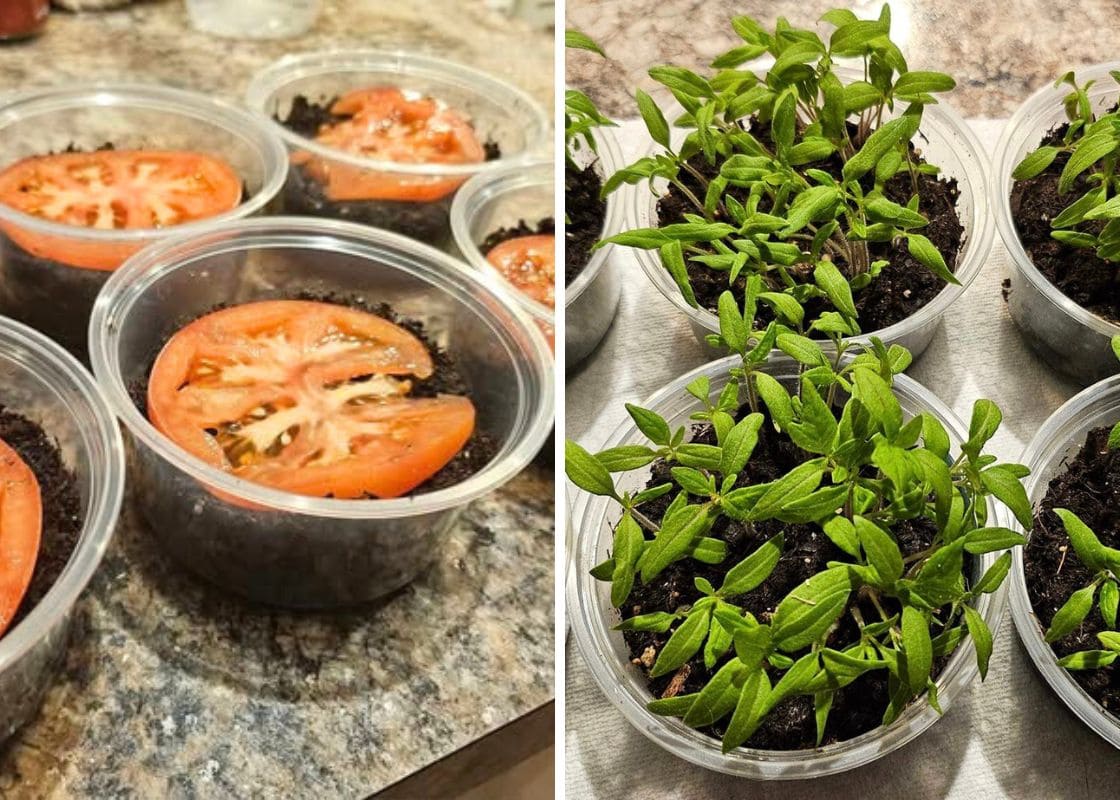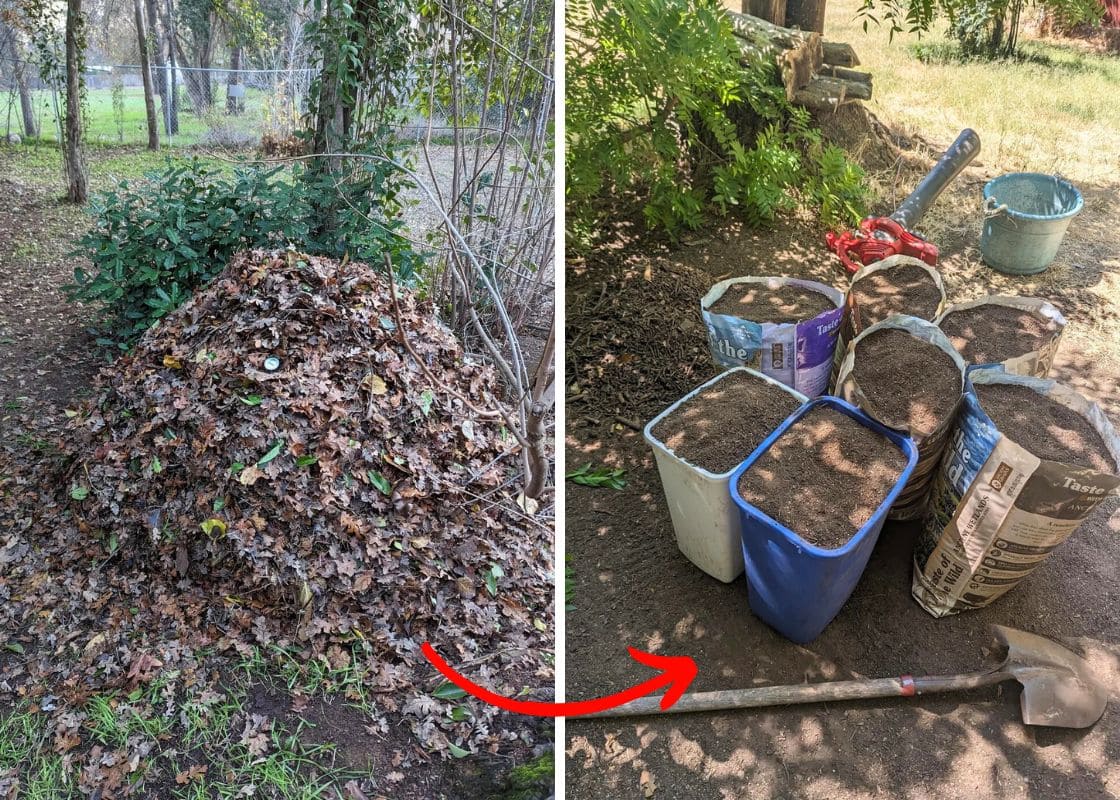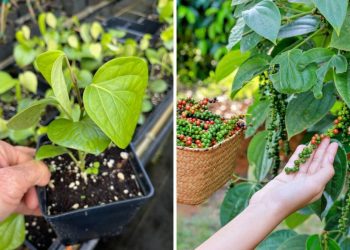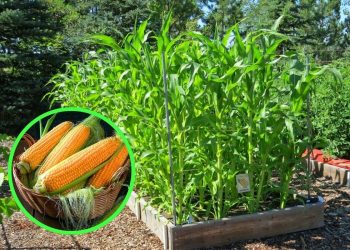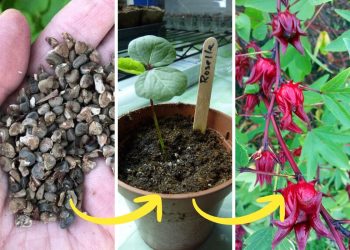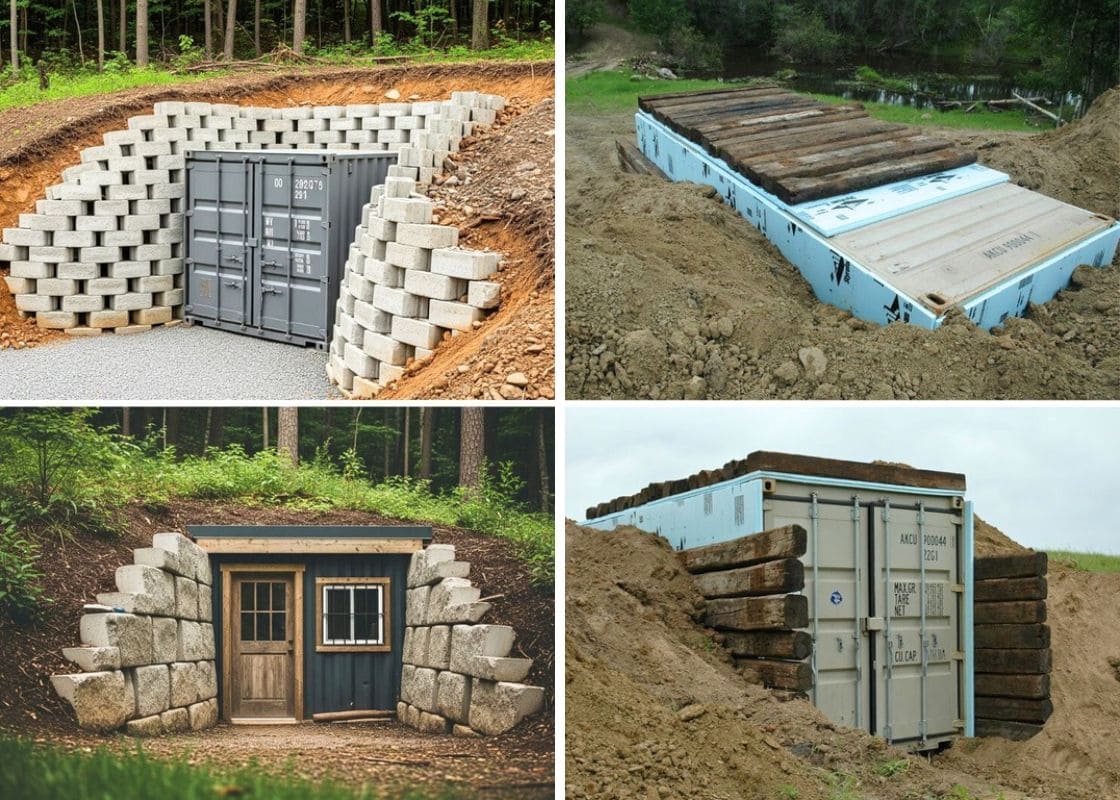Growing cucumbers has been one of my favorite gardening activities for years. Cucumbers are incredibly popular in gardens worldwide, not only for their refreshing crunch and mild flavor but also for their versatility in a myriad of dishes.
This easy-to-grow plant is an annual vine, known for its rapid growth and prolific fruit production.
Their fruits are packed with nutritional benefits, including being low in calories and high in water content, making them a perfect addition to a healthy diet. They are also rich in vitamins K and C and contain important antioxidants.
Cucumbers thrive in warm weather and require minimal effort, making them perfect for both seasoned gardeners and novices alike.

| Scientific name | Cucumis sativus |
| Common name | Cucumber, Gherkin |
| Plant type | Annual vine |
| Size | 6-9 inches in length |
| Fruit Type | Pepo (a type of berry) |
| Taste | Mild, watery, slightly sweet or slightly bitter |
| Light | Full sun |
| Soil | Well-drained, fertile soil with a pH of 6.0 to 6.8 |
| Hardiness Zones | 4-12 |
| Origin | South Asia |
Summary: 10 Cucumber Plant Stages
| #1. Choose Variety of Cucumbers |
|
| #2. Sowing Seeds |
|
| #3. Germination |
|
| #4. Cotyledons |
|
| #5. True Leaves |
|
| #6. Transplanting |
|
| #7. Care for Cucumbers |
|
| #8. Flowering |
|
| #9. Fruiting |
|
| #10. Harvest |
|
Stage 1: Choose Variety of Cucumbers
There are two main types of cucumber you can refer to: slicing and pickling cucumbers.
Slicing cucumbers are typically longer, with smooth, dark green skin, perfect for fresh salads and snacking. Varieties like ‘Marketmore 76’ and ‘Straight Eight’ are popular for their crisp texture and mild flavor.
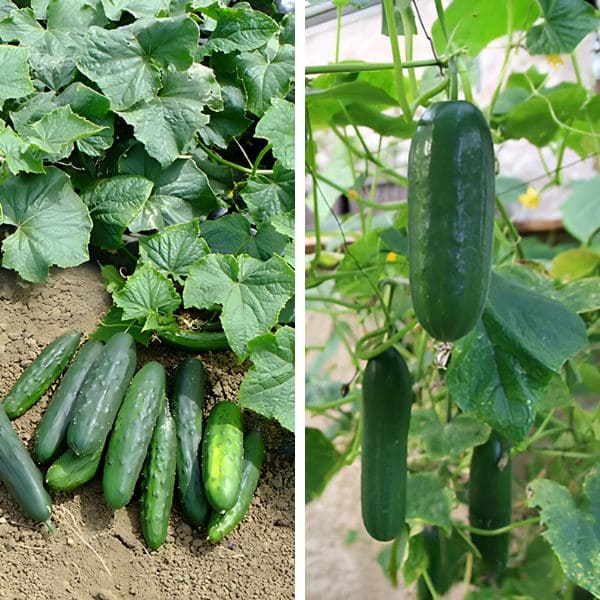
On the other hand, pickling cucumbers, such as ‘Boston Pickling’ and ‘Calypso,’ are shorter with bumpy skin, ideal for making crunchy pickles.

Make sure that you choose seeds that are flattened, oblong, off-white. Seeds stored in a cool, dry place can remain viable for up to five years, though germination rates may decline over time.
If your seeds are over five years old or appear soft, brown, mushy, or moldy, it’s best to discard them and purchase fresh ones.
High-quality seeds can be found at nurseries, garden centers, and online seed catalogs. Ensure the seeds are certified organic or non-GMO to promote healthier crops.
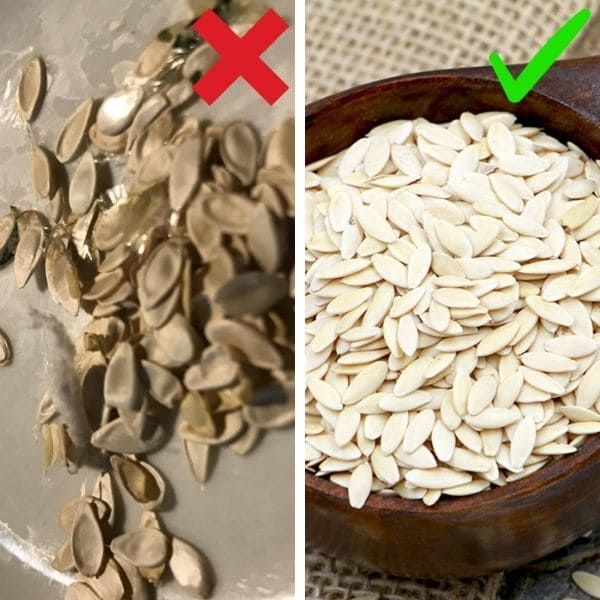
Stage 2: Sowing Seeds
It’s better to start cucumber seeds indoors. I usually sow my seeds 3-4 weeks before the last frost date. Begin by filling seed trays or pots with a quality seed-starting mix, then you can sow the seeds about ½ inch deep and keep the soil consistently moist.
You have to maintain a warm environment around 70-75°F and ensure the seedlings receive 12-14 hours of light daily either from a sunny windowsill or grow lights.
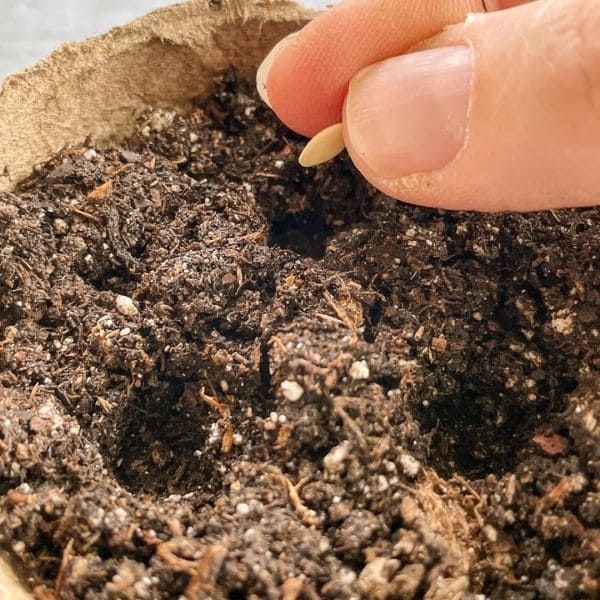
Stage 3: Germination
Cucumber seeds usually germinate within 3 to 10 days with the optimal temperature being around 70°F. Cooler temperatures can delay this process beyond 10 days. Maintaining consistent warmth and moisture is essential during germination.
Initially, the seed coat softens and cracks open, allowing the tiny root, or radicle, to grow downward into the soil. This critical phase happens entirely underground, making it invisible to the eye.
After the root takes hold, a small green shoot, known as a cotyledon, will emerge above the soil surface. This sprout is your first visible sign that the cucumber seed has successfully germinated and begun its growth.
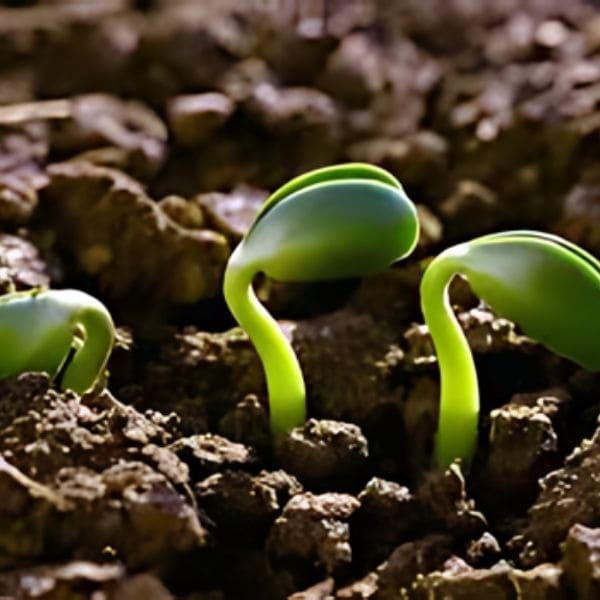
Stage 4: Cotyledons
The cotyledons, or seed leaves, are the first leaves to appear when a cucumber seed germinates.
Bright green and oval-shaped, these leaves emerge in pairs opposite each other. Unlike the true leaves that follow, cotyledons have a simpler shape. They play a crucial role in the plant’s early development by providing nutrients and energy through photosynthesis.
After the seed coat splits, the cotyledons push through the soil and unfold to capture sunlight. They typically last about two weeks before withering and falling off.
During this period, the first true leaf, which is more lobed and complex, begins to emerge. This marks the transition from seedling to a more mature plant.
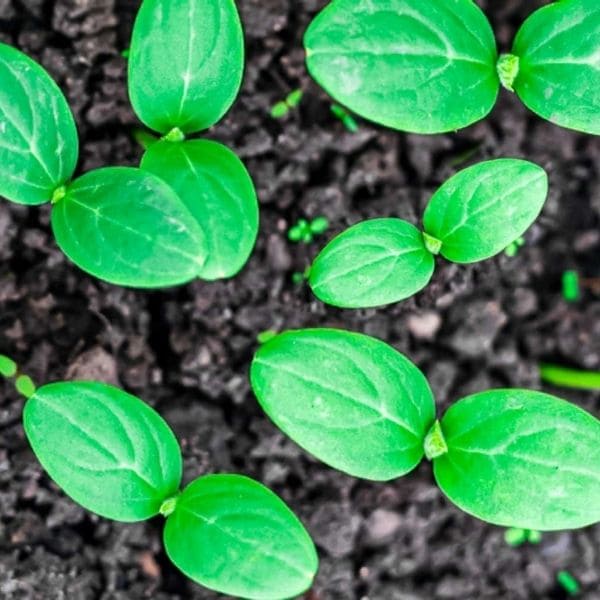
Stage 5: True Leaves
One morning, as you wake-up, you’re greeted by the sight of the first true leaves unfurling on your cucumber plants.
Their rich green hue and intricate, jagged edges stand in stark contrast to the simpler cotyledons that preceded them. A wave of excitement washes over you-this is a clear sign that your careful nurturing is paying off.
These true leaves emerges about a week or two after germination. They vastly improve the plant’s ability to photosynthesize. Also, you need to remember thin them when seedlings have grown a couple of true leaves and are around 4 inches tall.
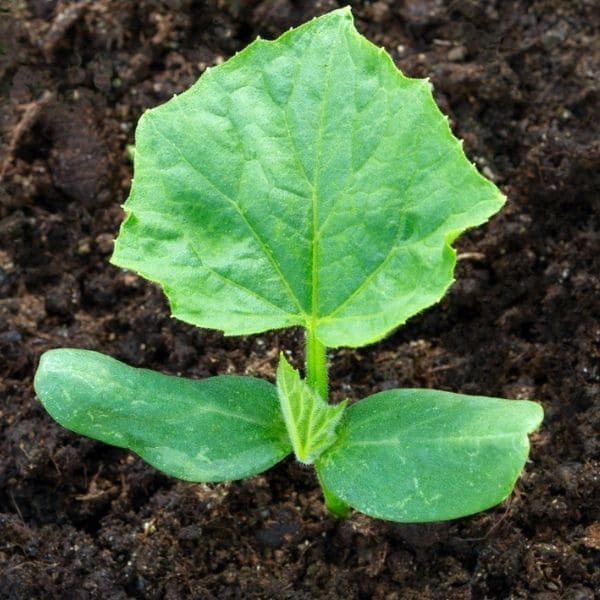
Stage 6: Transplanting
Gradually expose young cucumbers to outdoor conditions over a week. Once hardened off, transplant the seedlings into the garden, spacing them 12-18 inches apart with rows 3-6 feet apart. This spacing allows for good air circulation and prevents overcrowding.
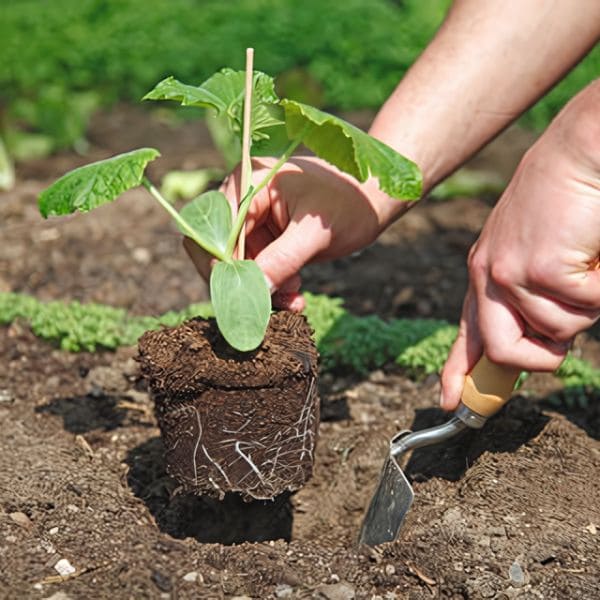
Tips: You should plant beans and radishes alongside cucumbers to enhance growth and deter pests. However, avoid planting cucumbers near potatoes and sage, as they can inhibit each other’s growth and attract harmful insects.
Stage 7: Care for Cucumbers
Light
Cucumbers thrive in full sunlight, needing at least six to eight hours of direct light each day. In my experience, ensuring your cucumbers get enough light is crucial because of photosynthesis, which fuels the plant’s energy and growth.
Position your garden or containers in the sunniest spot available. Insufficient light can lead to weak plants and poor yields.
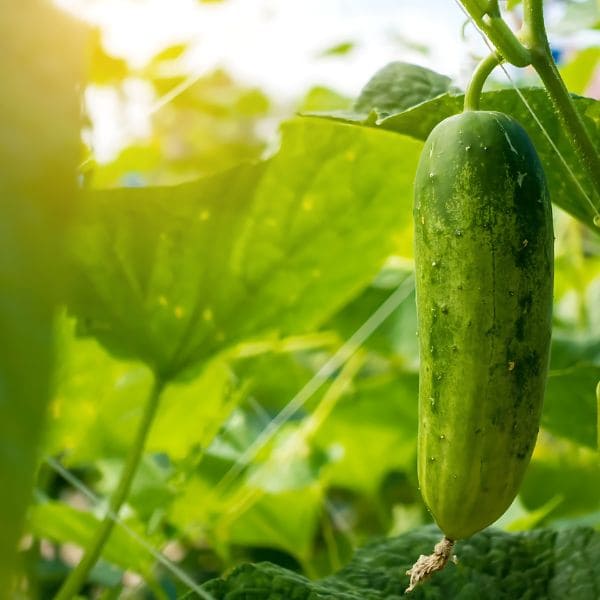
Soil
Well-drained, fertile soil is best for cucumber plants. Aim for a soil pH between 6.0 and 6.8, which you can test with a simple kit from any garden center. Many gardeners face up to poor root development and stunted growth due to their loamy or sandy soil.
Therefore, if your soil is sandy, adding organic matter can help retain moisture. For clay-heavy soil, compost and sand can enhance drainage.
Water
Cucumbers need about 1 inch of water per week to thrive. Watering early in the morning is best, as it allows the plants to absorb moisture before the heat of the day.
You can use efficient techniques like drip irrigation or soaker hoses deliver water directly to the roots, reducing evaporation and water waste. Remember that overwatering can lead to root rot and fungal diseases, while too little water causes stunted growth and bitter fruit.
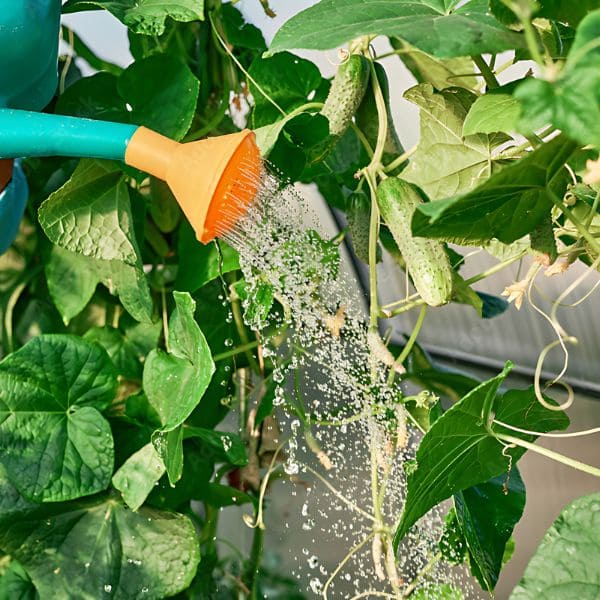
Temperature and Humidity
Cucumbers thrive in warm temperatures, ideally between 70-85°F during the day. Cooler temperatures can slow growth, while excessive heat can stress the plants.
They are best suited for USDA hardiness zones 4-12. Humidity also affects cucumbers; they prefer a moderate to high humidity level. Too little humidity can cause the soil to dry out quickly, while too much can encourage fungal diseases.
Mulching
Using mulch can help retain soil moisture, suppress weeds, and regulate soil temperature. Organic mulches like straw and compost are particularly effective. Straw keeps the soil cool and reduces evaporation, while compost adds valuable nutrients as it breaks down.
To make your own compost, combine green materials (like vegetable scraps) with brown materials (such as dried leaves) in a compost bin. Turn the pile regularly and keep it moist. Over time, this will decompose into rich compost, perfect for mulching.
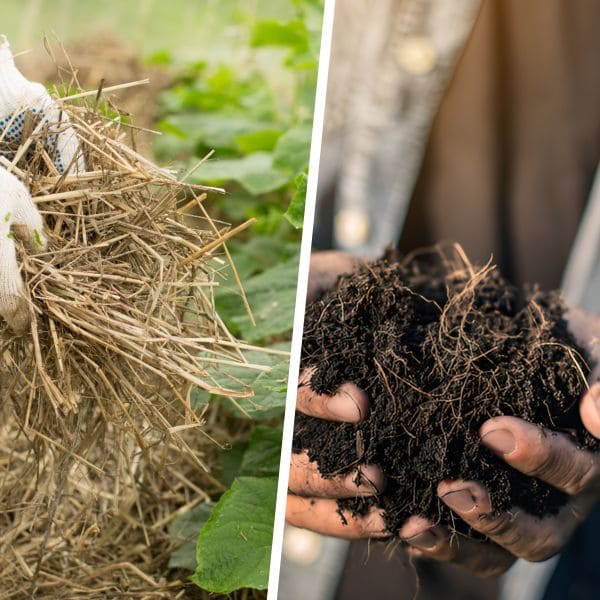
Pests and Diseases
Common pests include cucumber beetles, aphids, and spider mites. Cucumber beetles are small, yellow-green beetles with black spots, while aphids are tiny green or black insects that cluster on the undersides of leaves. Spider mites are microscopic and leave fine webs on the plants.
To manage these problems, you can use natural control methods, like using insecticidal soap or neem oil. Introducing beneficial insects such as ladybugs can also help keep pest populations in check.
If necessary, chemical controls are available, but I prefer to use natural methods whenever possible.
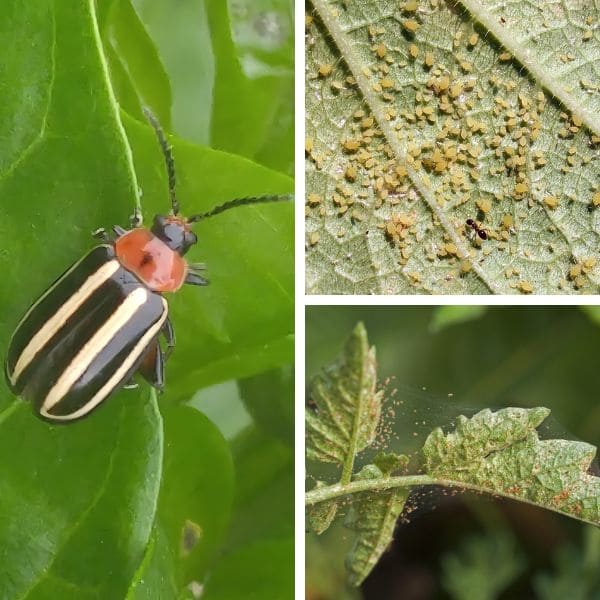
In addition, diseases such as powdery mildew, downy mildew, and bacterial wilt can significantly impact your cucumber crop.
Powdery mildew appears as white, powdery spots on leaves, while downy mildew causes yellow patches and fuzzy growth on the underside of leaves. Bacterial wilt causes leaves to wilt and die.
To prevent these diseases, ensure proper spacing for air circulation, avoid overhead watering, and use resistant varieties. If your plants become infected, remove and destroy affected areas immediately. Applying fungicides or other appropriate treatments can help manage the spread.
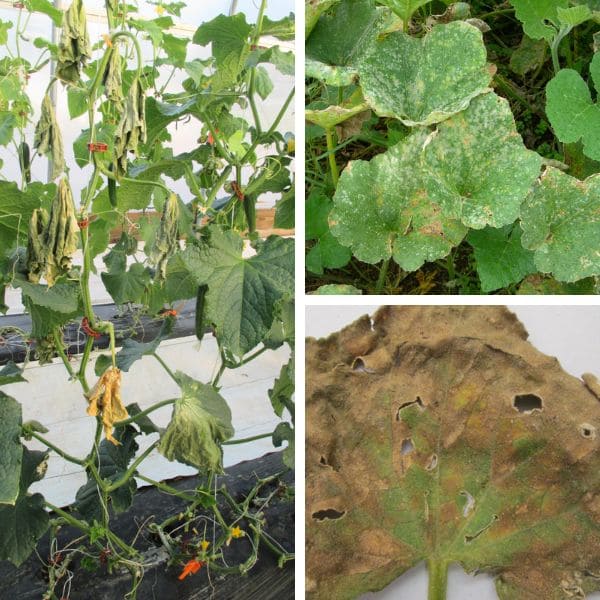
Stage 8: Flowering
After about six to eight weeks after germination, cucumber plants begin to produce flowers. These blossoms are bright yellow and typically have five petals with a star-like shape.
Cucumber plants have both male and female flowers. Male flowers usually appear first and are essential for pollination, while female flowers, identifiable by the tiny swelling at their base, will develop into cucumbers once pollinated.
They are mostly pollinated by bees, including honeybees, bumblebees, sweat bees, and even ants. Without proper pollination, you might notice misshapen or underdeveloped fruits. To attract these pollinators, plant bee-friendly flowers like bee balm, lavender, or catmint nearby.
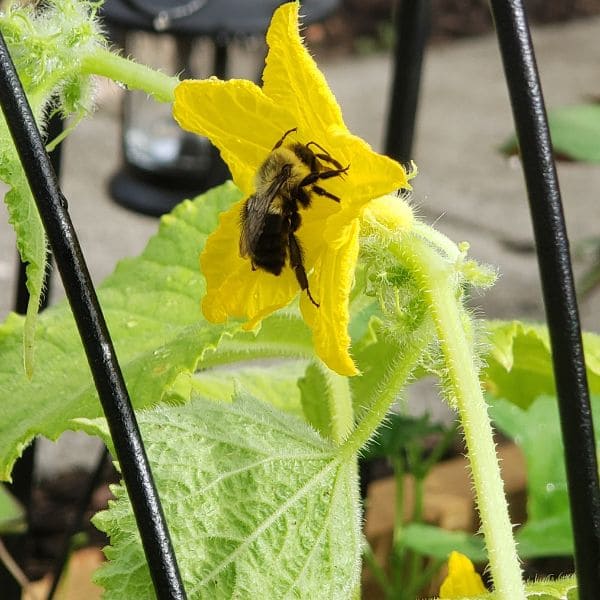
At this stage, it is essential to apply a balanced fertilizer (10-10-10) to support vigorous development and fruiting. Watch for signs of nutrient deficiencies, such as yellowing leaves or stunted growth, and address these issues promptly with the appropriate fertilizers.
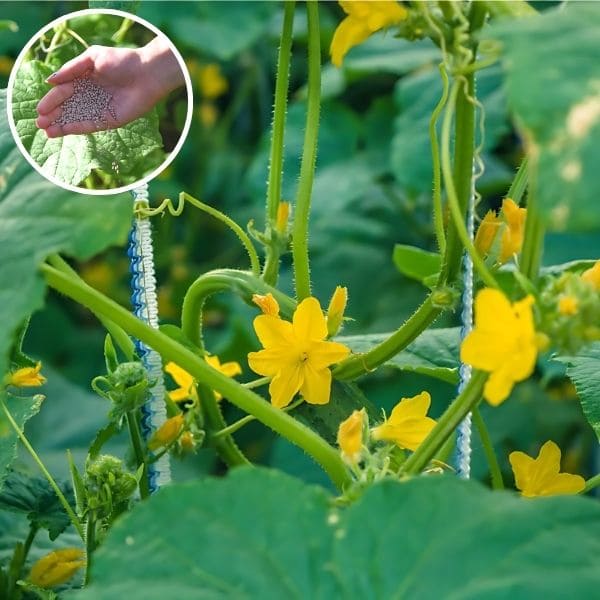
Stage 9: Fruiting
Pruning cucumbers can significantly enhance their growth and fruit production. You can use clean, sharp scissors or pruning shears to pinch off the side shoots or suckers that develop between the main stem and the leaf nodes.

Tiny cucumbers begin to develop about 10 to 12 weeks after planting. As the fruit starts to grow, it’s crucial to maintain consistent watering and provide adequate nutrients to support their development. Cucumbers can grow rapidly, often reaching harvest size within a week or two.
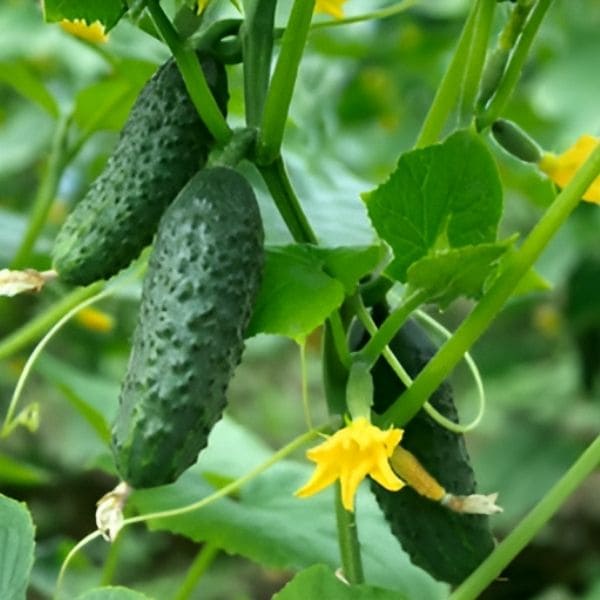
In addition, using trellises or cages for your cucumbers can keep the vines off the ground, promoting better air circulation and reducing disease risk. You can choose some methods such as A-frame, vertical, and horizontal trellises. I prefer the A-frame for its stability and ease of use.
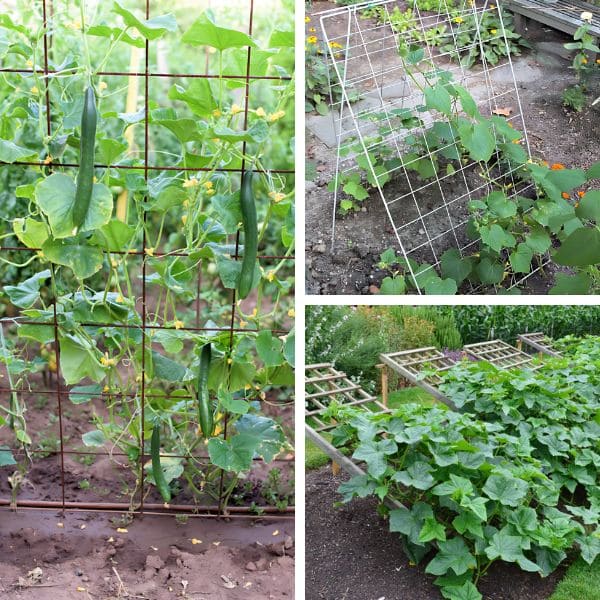
Stage 10: Harvest
For slicing cucumbers, look for fruits that are about 6-8 inches long, with a dark green color. They should feel firm to the touch.
For pickling cucumbers, the optimal size is smaller, around 2-4 inches long. It’s essential to pick them before they become too large and start turning yellow, bitter and seedy.
To harvest cucumbers without damaging the plant, use a sharp knife or garden shears. Carefully cut the stem about half an inch above the fruit. Avoid pulling or twisting the cucumber off the vine, as this can harm the plant and reduce future yields.
I recommend checking your plants every couple of days during the peak growing season, as cucumbers can grow quickly. Frequent harvesting encourages the plant to produce more fruits throughout the season.
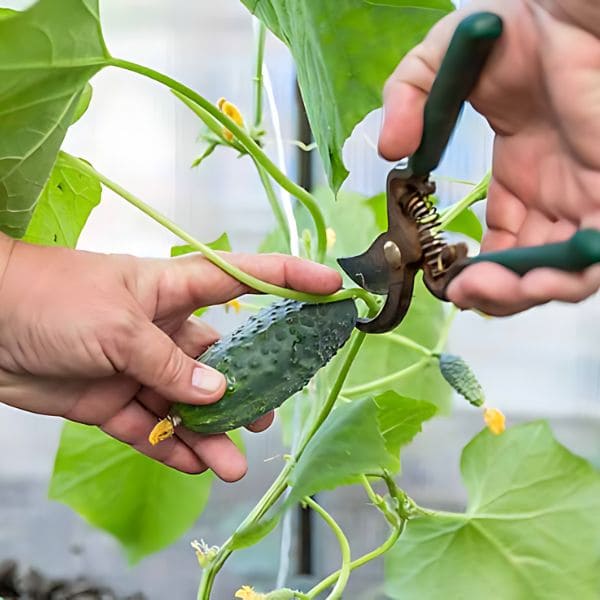
Besides cucumber salads, I love pickling. I often combine vinegar, water, salt, sugar, and spices like dill and garlic in a pot, bring to a boil, and pour over sliced cucumbers in sterilized jars.
Another method is fermenting, which gives cucumbers a unique, tangy flavor. You can also freeze cucumbers, though they lose some crunch.

FAQs
Do cucumbers grow underground?
No, cucumbers grow above ground on vines that can either sprawl on the ground or climb up trellises.
Why do my cucumber leaves turn yellow?
It could be due to a nutrient deficiency, particularly nitrogen, or overwatering leading to root rot. Ensure your soil is well-drained and consider applying a balanced or nitrogen-rich fertilizer. Regularly check your watering schedule to avoid waterlogging the roots.
Why my cucumber plants has little fruit?
The primary cause is usually poor pollination. Cucumbers rely on bees and other insects for pollination, so if your garden lacks pollinators, plant bee-friendly flowers like bee balm or lavender nearby. Hand pollinating the flowers with a small brush can also help improve the fruit set.
Why my cucumber fruits are bitter?
Bitter cucumbers often result from environmental stress, such as irregular watering, high temperatures, or nutrient imbalances. Consistently watering your plants, especially during dry spells, can help.
Regular fertilization and picking cucumbers when they are young and tender also improve flavor. Besides, when cooking, peel them from the stem end (top) to the blossom end (bottom) to avoid spreading the bitterness.
